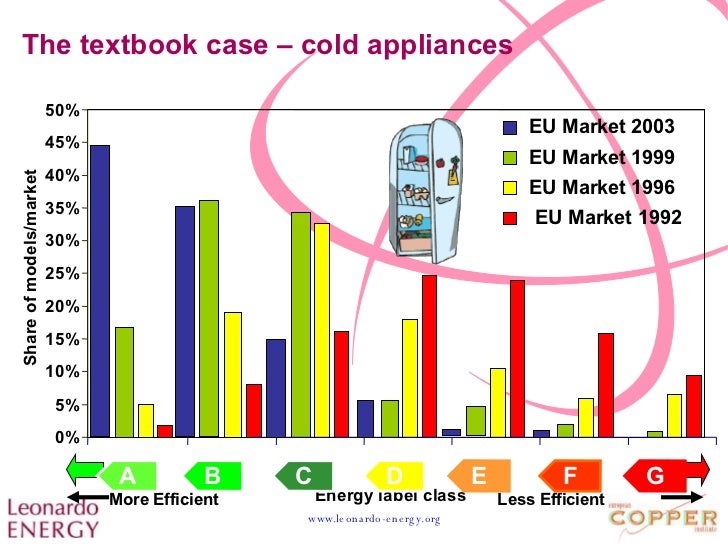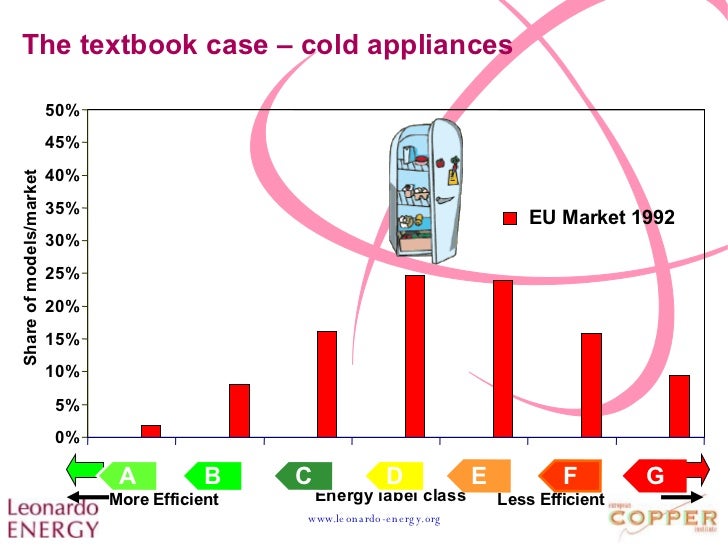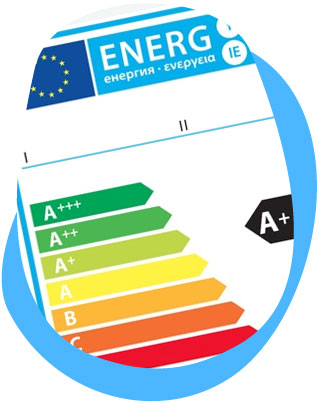45 new energy efficiency labels explained
New TV energy labels: Before and after - FlatpanelsHD FlatpanelsHD has reviewed the consequences of the new energy label for TVs that we introduced in the EU on March 1, 2021 as first reported earlier this week . The new label includes energy consumption and scale for both SDR (Standard Dynamic Range) and HDR (High Dynamic Range), and now specifies kWh (kilowatt-hour) per 1000 hours - Watt can ... PDF New energy efficiency labels explained - European Commission A return to the well-known and effective energy labelling scale 'A to G' for energy efficient products, including a process for rescaling the existing labels.-A digital database for new energy efficient products, so that all new products placed on the EU market are registered on an online database, allowing greater transparency and easier market
The new EU energy label explained - GOV.UK The label rates products from dark green (most efficient) to red (least efficient). The label also shows total energy consumption and provides other information relevant to that product, such as...

New energy efficiency labels explained
What do energy labels mean? - Green Choices The familiar EU Energy label, rates products from A (the most efficient) to G (the least efficient) and is required by European law to be displayed at the point of sale on the following products: Washing machines, washer-dryers tumble dryers Fridges, freezers and fridge freezers Dishwashers Electric ovens Energy-saving light bulbs Air conditioners Energy labels decoded | Currys TechTalk On the left-hand side of the label you'll see a scale with different colours from deep green for A all the way through to red for G. A is the most energy efficient and G is the least. To find out what energy rating the tech you're looking at has, check the black pointer symbol next to the scale. QR code Understanding the label | Energy Rating The Energy Rating Label and Zoned Energy Rating Label are mandatory comparison labels. Endorsement labels Endorsement labels, such as the ENERGY STAR label, provide a 'seal of approval' to inform prospective purchasers that the product is highly energy efficient for its class. The ENERGY STAR label is not regulated by the Australian Government.
New energy efficiency labels explained. New Energy Label for Home Appliances | NEFF IE The most significant change in the new Energy Labels is the elimination of the energy efficiency plus classes like, for example A+++. In the future, classification will be from A to G. New methods will also be used for measuring energy consumption and determining the label class. How to Read a Window Energy Efficiency Label | HGTV VT is expressed as a number between 0 and 1. The higher the VT, the more light is transmitted. Air leakage* is expressed as the equivalent cubic feet of air passing through a square foot of window area (cfm/sq. ft). Heat loss and gain occur by infiltration through cracks in the window assembly. The lower the AL, the less air will pass through ... Explanation of The New Eu Energy Labelling | AEG The new labelling is more complex, with new performance items, stricter eco-design* requirements and new testing methods. The new Energy Label is to be implemented in stores from 1st March 2021, but legislation foresees a "pre-phasing" period: 1. From 1st November 2020 manufactures HAVE to provide new & old labels inside each product coming ... New energy labels: the energy transition starts at home As of 1 March, consumers will find new, revamped labels mainly on four product types: dishwashers, washing machines, fridges and televisions. Lamps will also get new energy labels on 1 September ...
New 2021 Energy Ratings Explained!| Box.co.uk The new energy efficiency labels will be updated with a new scale and simplified icons, with more consistency to compare products in different categories. The features below have been adjusted and added to the new labels: A simplified rating scale of A-G without additional pluses Explaining the New Energy Label for Home Appliances - Euronics Since the energy label was introduced, there have been significant improvements in energy saving technology. This meant that all new products were being given the top rating for efficiency. As a result, the label has been recalibrated to make it easier for you to compare models when purchasing a new appliance. Why The New Energy Label? What does the new energy label mean for you and your home? What the new energy label looks like New A to G ratings This will go from A to G (with no more confusing A+++ ratings) and is a clearer reflection of how efficient your appliance is by modern standards. Interestingly, washer-dryers will now get two ratings, one for washing and one for drying. QR-code for more product information EU energy labelling requirements - Your Europe Since March 2021, the energy label rating system uses A to G rankings only, instead of A+++ to D ratings as before. This new rating system applies to the following product groups: refrigerators dishwashers washing machines televisions light bulbs and lamps The first 4 product groups must feature the rescaled labels from 1 March 2021.
New Energy Label for Home Appliances | NEFF IE The Energy Label displays the energy consumption while baking in two different heating modes: with hotair or with top-/bottom heat. Beside the consumption also the volume of the cavity is mentioned. 1 Energy efficiency class. 2 Energy source: electricity. 3 Cavity capacity. 4 Energy consumption in kWh/cycle (top-/bottom heat) What you need to know about the new energy label - Energy Saving Trust The new label will include the new energy efficiency scale and noise emission classes for spinning. Energy consumption is now listed as per 100 washes, with a rated capacity, water consumption and details of duration now listed for a wash and dry cycle, as well as for wash only. Dishwashers. As well as the new energy efficiency scale, energy ... In focus: A new generation of EU energy labels The new labels will contain a simpler scale (A to G) and it will be easier to compare the energy efficiency between different products. The EU energy label is language neutral, a must as there are 24 official languages within the EU internal market. Label | Energy Rating Use the Energy Rating Label to work out rough running costs with some simple maths. It's easy - just take the energy consumption figure - and divide it by 4. For example, if the Energy Rating Label on a washing machine says it uses 400 kWh, it means it will roughly cost you $100 per year to run. Easy!

Energy rating label for airconditioners, Australia: New change explained, what it means | Herald Sun
The EU Energy Label Explained - Panasonic UK & Ireland 1. Average energy consumption of the product in kilowatt hours (kWh) for a year. 2. Average annual water consumption, in Litres. 3. Weight of the maximum load that the washing machine can handle, in Kilograms. 4. Spin drying efficiency rating.: 'A' being the most efficient. 5.
Energy labels: What's changing? - Appliance City Simplifying the scale, new energy labels will range from A to G. There will also be tighter restrictions to ensure it is harder to achieve the top energy rating. Whilst a lot of appliances will rate around the B/C mark, a product with an E/F rating will still be classed as energy efficient. These changes are designed to push manufacturers to ...
European Union energy label - Wikipedia A new energy label, introduced in 2010, is based on the energy efficiency index (EEI), and has energy classes in the range A+++ to D. The EEI is a measure of the annual electricity consumption, and includes energy consumed during power-off and standby modes, and the energy consumed in 220 washing cycles.
Regulations: energy information - GOV.UK Energy labels for certain products are being gradually re-scaled to display A - G energy rating classes instead of A+++ - G energy rating classes. The first phase of re-scaling took place in March...
Understanding Energy Efficiency Labels | Kitchen Magazine It's simple. Energy efficiency labels indicate the energy efficiency of the appliance in question. Appliances that are energy efficient use less electricity to achieve the same level of performance to similar models with the same size or capacity. The more energy efficient a model, the less energy it will use and the less it will cost you to run.
New energy labels for Europe and UK - Energy Saving Trust This week saw the launch of new energy labels for household appliances across the UK and Europe. They've replaced their predecessors, which have been proudly displaying energy efficiency levels for a range of products since 1994 and helping consumers to make greener choices when making a purchase. Energy Saving Trust is the delivery partner ...

(PDF) Overview of energy consumption and GHG mitigation technologies in the building sector of Japan
Understanding tyre ratings, markings and labels- Confused.com Car tyre labels explained All new car tyres sold in the UK and EU after November 2012 come with a standard tyre information label or sticker attached. The label ranks the tyre on 3 criteria: Fuel efficiency. Wet grip. External noise . Fuel efficiency and wet grip get a rating from green A (best) to red G (worst). External noise is measured in ...
Energy efficiency rating - label changes | Samsung IE First introduced 20 years ago, energy labels awarded a product with an A for high efficiency, or an F for low efficiency and encouraged manufacturers to drive innovation by using more energy efficient technologies. Over time, the scheme evolved and labels of A+, A++ and A+++ were added, adding confusion for consumers.
PDF Gov.uk '() 5 (QHUJ\ '/ LQGG Created Date: 20110228114325Z
New energy efficiency labels explained | European Week of Regions and ... He started by explaining the general political and policy framework, highlighting that the activities undertaken by the BELT project within the Energy labeling initiative are contributing towards the Energy efficiency EU target of at least 32.5%, as part of the EU's Energy and Climate targets for 2030.
EnergyGuide Labeling: FAQs for Appliance Manufacturers The Rule requires EnergyGuide labels for clothes washers, refrigerators, freezers, televisions, water heaters, dishwashers, room air conditioners, central air conditioners, furnaces, boilers, heat pumps, and pool heaters. Labeling requirements for certain light bulbs are explained here.
The New Appliance Energy Efficiency Ratings Explained What will the new energy efficiency label look like? The label is very similar to the old one but uses a new scale of A-G. Washer-dryers will have two points marked on the scale, one for washing only and one for a full wash-dry cycle There'll also be a QR code that links you to further online information on the energy ratings
Understanding the label | Energy Rating The Energy Rating Label and Zoned Energy Rating Label are mandatory comparison labels. Endorsement labels Endorsement labels, such as the ENERGY STAR label, provide a 'seal of approval' to inform prospective purchasers that the product is highly energy efficient for its class. The ENERGY STAR label is not regulated by the Australian Government.
Energy labels decoded | Currys TechTalk On the left-hand side of the label you'll see a scale with different colours from deep green for A all the way through to red for G. A is the most energy efficient and G is the least. To find out what energy rating the tech you're looking at has, check the black pointer symbol next to the scale. QR code
What do energy labels mean? - Green Choices The familiar EU Energy label, rates products from A (the most efficient) to G (the least efficient) and is required by European law to be displayed at the point of sale on the following products: Washing machines, washer-dryers tumble dryers Fridges, freezers and fridge freezers Dishwashers Electric ovens Energy-saving light bulbs Air conditioners













Post a Comment for "45 new energy efficiency labels explained"